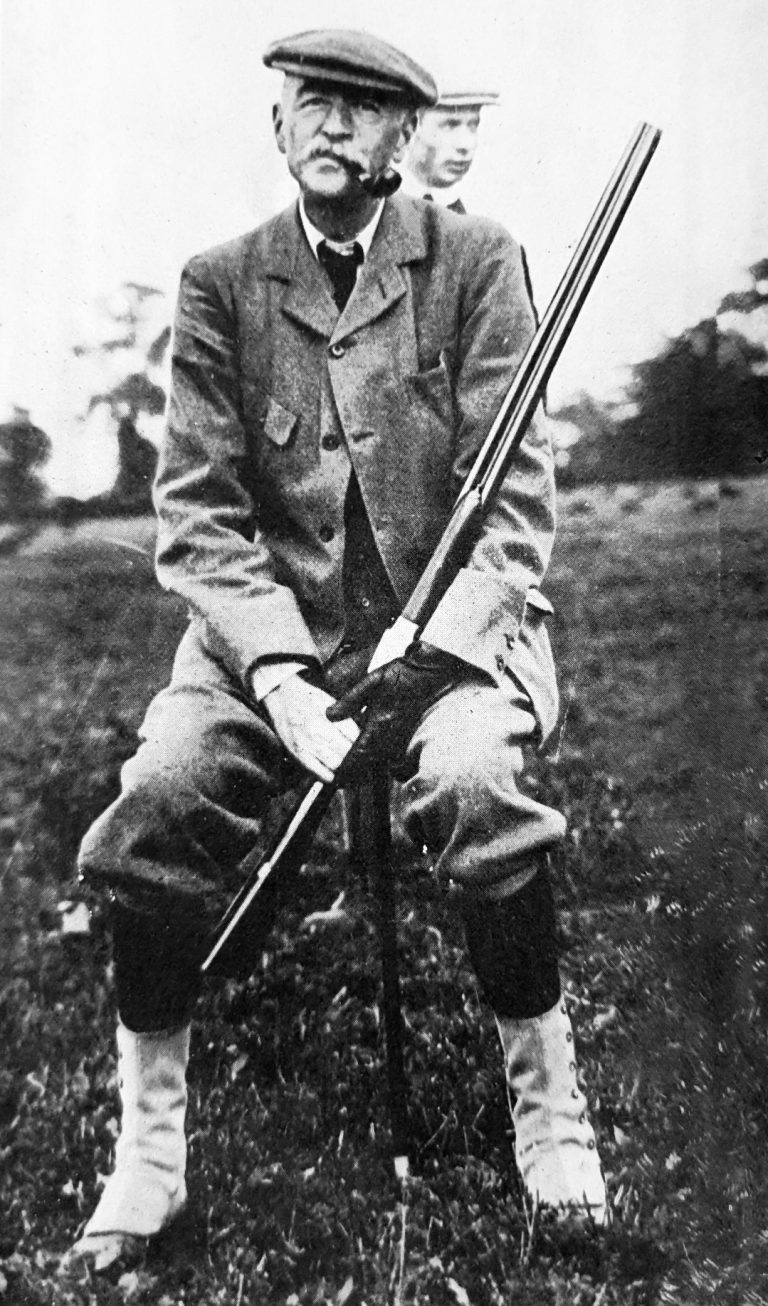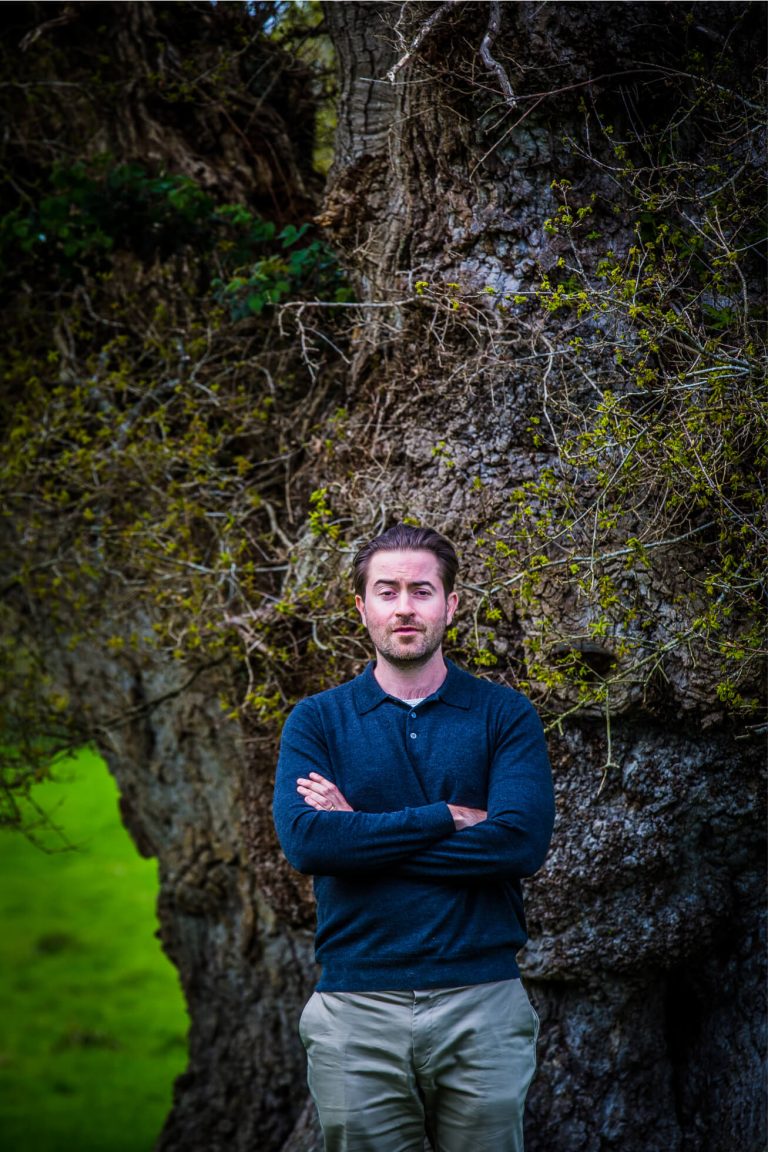History & Heritage
Eynsham Park has been home to the Mason family for five generations since 1866, when it was acquired by Mr James Mason (JM) (1824-1901). JM was a talented and visionary man, who made his fortune mining in Spain and Portugal. The Grade II listed mansion known as Eynsham Hall was the primary residence on the Estate for the next three generations. It underwent significant changes upon the succession of JM’s son James Frances Mason and his wife Lady Evelyn. It was under their direction that Eynsham Hall was rebuilt as the Jacobean style mansion that stands today.
During the Second World War, Eynsham Hall was requisitioned by the Government for use as a hospital and maternity ward. The family moved out and lived elsewhere on the Estate. It has since seen use as a police training academy, hotel and today a members club. The extensive surrounding land comprises over 3000 acres of parkland, ancient woodlands and farmland. The Mason family continue to work towards diversification and sustainable growth.
1866-1903
Mr James Mason, (JM) (1824-1903) an English mining engineer born in 1824, was a talented and visionary man who made his fortune mining in Spain and Portugal. JM successfully extracted copper and sulphur from São Domingos, an old Roman mine located in the Alentejo region of Portugal, where he built a town for 10,000 people with 2 palaces, a cathedral, and many other amenities for his employees and their families. Here in Southern Portugal JM introduced a railway, electric power and other new facilities not previously seen anywhere else in the country. It was a result of these pioneering improvements that The King of Portugal eventually created JM the Count (Earl) of Pomarão, a title that neither he nor his successors have ever used.
Mason was an imaginative and forward-thinking scientist. He eventually handed over the management of the mine to his son James Francis Mason (JFM) and he returned to England. His aim was to acquire an English country estate where he could dedicate his time to agricultural research.
In 1862, the then Prince of Wales (later King Edward V11) had wondered whether to take Eynsham Park, in Oxfordshire, or Sandringham, in Norfolk. He decided on Sandringham, so JM then moved to acquire Eynsham Park himself.
JM’s interest in agriculture and farming made an immense start in shaping Eynsham Park into what it is today. He undertook numerous pioneering agricultural experiments, for which he was made a Fellow of the Royal Society (FRS). His substantial improvements extended beyond the parks and farmland, into local villages. In his obituary he was acknowledged as a great agriculturalist, and his cropping methods were recognised as being among the best in the country. The Eynsham Park estate became almost entirely self sufficient under JM’s direction. he died in 1903.


1903-1929
James Francis Mason (JFM) (1861-1929) was clever and astute, a fine businessman and very well liked. He was a company director of several well-known businesses, including the Great Western Railway, and was for a time MP for Windsor. On his succession, JFM and his wife Lady Evelyn, were responsible for updating the family home, Eynsham Hall, when it was renovated and re-built by Architect Sir Ernest George in 1904. The original house was modernised, making way for the Jacobean style mansion that stands on the Estate today. JFM and Lady Evelyn had 4 daughters and 1 son, Michael (MHM).
After JFM’s death in 1929, his son Michael (MHM) (1900-1982) took over with a particular interest in livestock and woodland. He was a tough, determined and adventurous man and a talented sailor, for which he won many ocean-racing trophies.
During the Second World War, MHM served in the Naval Intelligence Department, and was twice Mentioned in Despatches.
His first wife the Hon Annette Baird, daughter of Viscount Stonehaven, whom he married in 1925, oversaw the running of Eynsham Park during his absence. As was common at this time, the Government requisitioned Eynsham Hall and the surrounding land, providing space for two hospitals, a home for the blind and several army camps. As well as having overseen the running of the Estate, Annette also shared a passion for livestock and won many awards for her well-known pedigree herd of Aberdeen Angus cattle, who grazed at Littlegreen Farm. Annette died in 1950 without having had any children, and later MHM re-married Dorothy Margaret ‘Jim’ Sturdee and they went on to have 3 children, David, Mary and Robert.



David Mason (DM) (1951-2025), took over when his father died in 1982. And until 2020 was responsible for the running of Eynsham Park. DM was academically gifted but refused to go to University and instead joined the Army. He served 3 tours of duty in Northern Ireland; then in 1974 he volunteered for secondment to the Sultan of Oman’s Armed Forces.
DM distinguished himself on active service in the Dhofar War in 1975 by personally saving 12 men’s lives in battle and then later rescuing others from a minefield. He was awarded the Sultan’s Bravery Medal.
After leaving the Army in 1979 DM joined Sir Ranulph Fiennes on the Transglobe Expedition, travelling to both the South and North Poles.
Alongside the running of Eynsham Park, DM published his first novel in 1992, Shadow over Babylon, which was an immediate International No.1 bestseller. He was later (1994-5) appointed High Sheriff of Oxfordshire. He was made a Deputy Lieutenant for the county in 2004. DM handed over the running of Eynsham Park to his son Michael (MJM) in 2020.
2020- Present
Since 2020 Michael (MJM) has taken on the key role to drive the Estate forward. Today, Eynsham Park is dedicated to the preservation of its natural surroundings, and there is an ongoing commitment to invest in future farming, environmental diversification, and the local community. Following in the footsteps of previous custodians, the focus of the Estate continues to develop new ideas for future generations to treasure.
